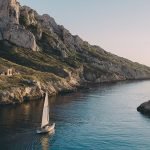Introduction to Finland: A Land of Natural Wonders
Welcome to Finland, a nation often referred to as the ‘Land of a Thousand Lakes,’ though this is a modest understatement, as it is home to over 188,000 lakes. Located in Northern Europe, Finland boasts an unparalleled geographical diversity that invites exploration. Its vast wilderness areas, pristine lakes, and dense forests imbue the landscape with an almost mystical charm. This captivating natural beauty positions Finland not only as a premier travel destination for nature lovers but also as a haven for culture enthusiasts and adventurers seeking unique experiences.
Finland’s dramatic seasonal changes offer visitors different scenic and cultural experiences throughout the year. During the summer months, the phenomenon of the Midnight Sun illuminates the country, providing nearly round-the-clock daylight, ideal for hiking, cycling, and kayaking. Conversely, the winter season transforms Finland into a snowy wonderland, perfect for activities such as cross-country skiing, dog sledding, and viewing the Northern Lights—a celestial spectacle best observed from Finnish Lapland.
The country’s topography is defined by more than just its lakes. Extensive forested regions, which cover about 75% of the land area, provide sanctuary for a rich diversity of flora and fauna. Finland’s national parks offer well-maintained trails and facilities, encouraging sustainable tourism and enabling visitors to experience the Finnish wilderness responsibly.
Cultural elements add another layer to the Finnish experience. The blend of modern urban environments with historical landmarks, like the coastal city of Helsinki, gives insight into the country’s rich heritage. Saunas, a fundamental part of Finnish culture, exemplify the Finns’ deep connection with nature and their emphasis on well-being.
Overall, Finland stands out as a unique destination due to its breathtaking natural wonders and inviting cultural experiences. Whether you’re eager to explore the spectacular landscapes, immerse yourself in local traditions, or seek thrilling adventures, Finland promises an enriching and unforgettable journey.
Helsinki: The Vibrant Capital City
Helsinki, the capital city of Finland, stands as a beacon of modern sophistication intertwined with rich cultural heritage. As you traverse its streets, you’ll encounter a dynamic blend of historic and contemporary landmarks that reflect the city’s vibrant spirit. One iconic symbol of Helsinki’s architectural grandeur is the Helsinki Cathedral, an imposing neoclassical masterpiece that dominates the Senate Square. Its pristine white facade and striking green dome make it an unforgettable part of Helsinki’s skyline.
Nearby, the UNESCO World Heritage site, Suomenlinna Fortress, offers a glimpse into the past. Originating in the 18th century, this sea fortress spans multiple islands and serves as a testament to Finland’s strategic maritime history. Its well-preserved bastions and scenic walks through lush greenery make it a favorite among both history enthusiasts and nature lovers.
Helsinki’s bustling Market Square (Kauppatori) is another must-visit, offering a genuine taste of local culture. Situated by the harbor, this lively marketplace is a hub of activity. Vendors sell a variety of Finnish delicacies, fresh produce, and artisanal goods. From sampling succulent berries to savoring traditional Finnish salmon soup, the Market Square encapsulates the city’s culinary delights.
Art and architecture aficionados will find Helsinki a continual source of inspiration. The city boasts an array of museums and galleries, including the acclaimed Ateneum Art Museum, where classical and contemporary Finnish art coexist. Modernist architectural gems, such as Alvar Aalto’s Finlandia Hall, further underscore the city’s innovative spirit.
In Helsinki, the marriage of the old and new creates a vibrant urban tapestry. Whether you are strolling along the Esplanadi park, or dining in one of the city’s avant-garde restaurants, you’ll find that Helsinki seamlessly merges tradition with modernity. This unique fusion ensures that the Finnish capital remains a lively and enchanting destination for all.
The Northern Lights in Lapland: A Celestial Spectacle
The Northern Lights, or aurora borealis, present one of the most mesmerizing natural phenomena in the world, and Finland’s northern region of Lapland is an ideal location to witness this celestial spectacle. This extraordinary light display occurs when charged particles from the sun interact with the Earth’s magnetic field, resulting in vibrant, dancing lights that illuminate the Arctic skies in shades of green, pink, and violet.
For those planning to witness this enchanting event, the best viewing times are between late September and early April. During these months, the nights are long and dark, providing optimal conditions for viewing. Key locations in Lapland, such as Rovaniemi, Kittilä, and Saariselkä, offer some of the most remarkable vistas for observing the Northern Lights due to their minimal light pollution and clear skies.
In addition to the visual awe, visitors to Lapland have a plethora of magical experiences to elevate their adventure. Reindeer safaris offer a unique and traditional way to traverse the pristine snowy landscape while enjoying the possibility of spotting the aurora borealis. Imagine gliding silently through the snow, under a canopy of illuminated night sky, driven by the native Sámi people and their gentle reindeer.
For those seeking a truly immersive Arctic experience, staying in an ice hotel adds an extra layer of enchantment. These architectural marvels are crafted entirely from ice and snow, providing a surreal, other-worldly experience. Many ice hotels feature glass-roofed igloos, allowing guests to comfortably lie back and gaze at the dance of the Northern Lights from the warmth of their beds.
Whether it’s the scientific wonder behind the aurora borealis or the myriad of unique experiences awaiting in Lapland, witnessing the Northern Lights in Finland is an unforgettable journey for those fortunate enough to behold this celestial phenomenon.
Exploring Finland’s National Parks
Finland’s national parks offer an exquisite glimpse into the country’s unspoiled wilderness, showcasing varied landscapes from dense forests to serene lakes. As a beacon for eco-friendly travel, these parks are meticulously maintained to preserve their pristine environments while providing a wealth of activities for nature enthusiasts.
One of the more accessible parks is Nuuksio National Park, located just outside the Finnish capital, Helsinki. Nuuksio is ideal for those looking to immerse in nature without venturing too far from urban amenities. The park features well-marked trails for hikers of all levels, making it easy to explore its verdant woodlands and rolling hills. Wildlife spotting is a common delight here, with opportunities to see deer, elk, and even the rare flying squirrel. The park’s numerous lakes offer excellent spots for boating and fishing, contributing to its appeal for outdoor activities.
Further afield, Koli National Park beckons with its dramatic landscapes and deep cultural heritage. Renowned for its scenic vistas, Koli’s rugged terrain offers a network of trails that lead to breathtaking viewpoints such as Ukko-Koli, which provide panoramic views of Lake Pielinen. This park is a haven for winter sports enthusiasts as well, with its trails transforming into prime cross-country skiing routes during the colder months. Additionally, Koli’s rich folklore and history add an extra layer of enchantment to the natural beauty, making it a culturally enriching experience.
Moreover, Finland’s emphasis on conservation is evident throughout its national parks. Efforts to protect the ecosystems are omnipresent, from strict regulations on development to initiatives aimed at sustaining biodiversity. Managed by Metsähallitus, which oversees state-owned lands, these efforts ensure that the parks remain havens for both wildlife and humans seeking solace in nature. Indeed, visiting any of Finland’s national parks offers a profound sense of tranquility, making them perfect destinations for those mindful of their ecological footprint.
With each park, offering its unique charm, activities and landscapes, Finland’s national parks present a comprehensive escape into nature’s unblemished elegance. Whether hiking through lush forests, spotting elusive wildlife, or simply enjoying a serene boat ride on a quiet lake, these parks provide an immersive experience that underscores the country’s commitment to environmental stewardship and sustainable tourism.
The Traditional Finnish Sauna Experience
The Finnish sauna is much more than a place to steam and relax; it is a fundamental part of the cultural fabric and everyday life in Finland. With roots tracing back thousands of years, the sauna tradition holds a significant place in the hearts and homes of Finns. Historically, saunas were often the first building constructed when establishing a homestead. The tradition has evolved, but the essence of the Finnish sauna remains unchanged: a sanctuary of cleanliness, purification, and well-being.
Saunas are renowned for their numerous health benefits. Regular sauna use promotes cardiovascular health by improving circulation and lowering blood pressure. The intense heat induces sweating, which helps to detoxify the body by flushing out toxins. Additionally, the sauna experience can alleviate stress, promote mental relaxation, and boost overall mood. The alternation between hot and cold—often involving a plunge into a cool lake or a roll in the snow—stimulates the body’s endorphin production, enhancing these wellness effects.
Beyond health benefits, saunas also hold immense social significance in Finland. Saunas are communal spaces where friends and family gather, share stories, and engage in meaningful conversations. The intimate and relaxed environment fosters a sense of camaraderie and connection. It’s common for business meetings and social gatherings to take place in a sauna, reinforcing its role as a crucial social institution in Finnish life.
For those seeking an authentic Finnish sauna experience, there are numerous options both in urban settings and the picturesque countryside. In cities like Helsinki, public saunas such as Löyly and Kotiharjun Sauna offer a genuine experience with modern amenities. For a more rustic and traditional ambiance, countryside saunas by lakesides or within national parks provide an unparalleled connection with nature. Notable examples include the saunas in Nuuksio National Park and the Koli National Park.
First-timers should be aware of some key etiquettes: always shower before entering the sauna, sit on a towel, and respect the quiet and tranquility of the space. It’s also customary to alternate between the sauna and a cool-down period to maximize the experience. By following these simple guidelines, anyone can partake in this storied Finnish tradition with ease and respect.
Finnish Culture and Heritage: A Rich Tapestry
Finland’s cultural heritage is an intricate blend of Eastern and Western influences, manifesting in its music, dance, festivals, and folklore. The Finnish identity is deeply tied to its unique positioning between Sweden and Russia, with traces of both cultures evident within Finnish traditions and customs. The country’s rich cultural fabric offers a fascinating glimpse into its historical evolution and contemporary practices.
Traditional music in Finland is a significant component of its cultural landscape. The kantele, a traditional Finnish string instrument, produces hauntingly beautiful melodies that have been passed down through generations. Folk music is often integrated into Finnish celebrations and festivals, bringing communities together to revel in their shared heritage. Moreover, modern Finnish music genres, such as heavy metal and pop, have gained worldwide recognition, contributing to Finland’s international cultural footprint.
Dance, another vital cultural element, ranges from traditional folk dances to contemporary ballets. The traditional Finnish dance, “kaustinen,” is often performed at festivals, and its lively movements are a testament to the joy and unity of Finnish communal life. Additionally, the Finnish National Ballet is renowned for its high-caliber performances, blending classical and contemporary styles.
Festivals in Finland are vibrant celebrations of the nation’s heritage and values. The Midsummer Festival, “Juhannus,” is among the most cherished, marking the summer solstice with bonfires, music, and dance. The Kalevala Day, honoring the national epic of Finland, highlights the importance of folklore and literary tradition in Finnish culture. These festivals provide an opportunity for locals and visitors alike to experience the depth of Finland’s cultural traditions.
Several notable museums and cultural institutions offer deeper insights into Finland’s historical and cultural heritage. The National Museum of Finland in Helsinki houses extensive collections that chronicle the nation’s journey from prehistoric times to the modern era. The Finnish Folk Museum, also located in Helsinki, provides a hands-on experience of traditional Finnish life, with exhibits showcasing clothing, tools, and domestic settings from different historical periods.
These cultural elements and institutions collectively weave a rich tapestry that defines Finland’s unique cultural identity. Through music, dance, festivals, and museums, one can appreciate the depth and diversity of Finnish heritage, making it a captivating aspect of this enchanting Nordic country.
Gastronomic Delights: Finnish Cuisine
Finnish cuisine is a testament to the country’s rich natural resources and enduring traditions, offering a unique blend of hearty and flavorful dishes. One of the iconic staples, karjalanpiirakka or Karelian pies, stands out for its simplicity and authenticity. These thin rye crust pastries are typically filled with rice porridge, mashed potatoes, or carrot, serving as a savory snack or a breakfast item often enjoyed with egg butter, a mixture of hard-boiled eggs and butter.
Another cherished dish is lohikeitto, a creamy salmon soup that is both nutritious and comforting. Made with fresh salmon chunks, potatoes, carrots, leeks, and a splash of cream, it embodies the essence of Finnish home cooking. The broth, enhanced with dill and a touch of allspice, brings forward the clean, fresh flavors of Finland’s abundant waters.
For those with a sweet tooth, mustikkapiirakka or blueberry pie, is a beloved dessert. Utilizing the widespread wild blueberries that flourish in Finnish forests, this pie combines a buttery crust with a sweet-tart blueberry filling, often enjoyed with a dollop of vanilla sauce or ice cream, adding a delightful finish to any meal.
Modern culinary trends in Finland are increasingly drawing from these traditional roots while incorporating contemporary techniques and global influences. Restaurants such as Helsinki’s Olo and Savoy are renowned for their innovative takes on Finnish classics, emphasizing locally sourced ingredients and seasonal produce. Visitors can expect an array of dishes that celebrate the purity and flavors of Nordic cuisine, from reindeer carpaccio to foraged mushroom risotto.
Overall, Finnish cuisine offers a remarkable gastronomic journey, inviting food enthusiasts to explore its diverse tastes. Whether through traditional delicacies like Karelian pies and salmon soup or modern culinary creations, Finland’s culinary landscape is a testament to its vibrant cultural heritage and natural bounty.
Planning Your Finnish Adventure: Practical Tips and Advice
Embarking on a journey to Finland necessitates meticulous planning to ensure a seamless and memorable experience. The optimal time for visiting Finland largely depends on your interests. For an ethereal winter wonderland experience, November to March provides the best opportunities to witness the Northern Lights and engage in winter sports. Conversely, the summer months from June to August are ideal for enjoying the Midnight Sun and exploring Finland’s extensive national parks.
Before traveling, it’s crucial to check the visa requirements. Finland, being part of the Schengen Area, allows visa-free travel for up to 90 days for citizens of EU and EFTA countries, as well as several other nations. Travelers from countries not included in this list must apply for a Schengen visa in advance. It’s advisable to consult the Finnish Immigration Service’s website for the most current information.
Transportation within Finland is efficient and varied, with options ranging from domestic flights and extensive train networks to buses and car rentals. Finland’s rail system provides an excellent way to traverse the country, offering scenic routes and unrivaled comfort. Alternatively, renting a car affords flexibility, particularly when exploring rural areas. For budget-conscious travelers, buses are a reliable option with comprehensive coverage across Finland.
Accommodation options in Finland cater to all preferences and budgets. From luxurious hotels and boutique bed and breakfasts to unique options like ice hotels and traditional log cabins, there is something for everyone. Moreover, Finland’s extensive network of campsites provides an opportunity for a more immersive natural experience.
To maximize your Finnish adventure, consider tailoring your itinerary to align with specific interests. Culture enthusiasts might enjoy the historical architecture of Helsinki and Turku, while nature lovers can explore the many national parks, such as Nuuksio and Koli. For those intrigued by Finnish traditions, visiting during festivals like Midsummer or the Rovaniemi Christmas celebrations offer a deeper cultural immersion.
By considering these practical tips, travelers can enrich their Finnish adventure, ensuring a visit that is both enjoyable and unforgettable.





